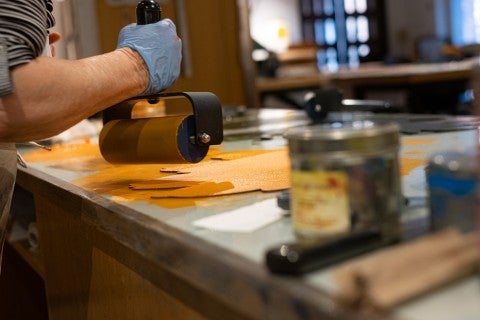History of Rice Cinema
The Rice Media Center has always been—by design and by direction—an open, inviting, unassuming, and loosely defined place. As one hops up its wooden steps and flings open the door, it’s easy to forget about the countless unique and transformative experiences hosted here over the past half-century. It’s just as easy to take for granted the prescience of its founders so early recognizing the importance of emerging languages and cross-cultural connections possible through media arts, as well as to overlook the absolute rarity of a welcoming home for media creation, exhibition, discourse, and socializing under one roof. It’s not widely enough known that Roberto Rosselini, Jean-Luc Godard, Sam Peckinpah, D.A. Pennebaker, Stan Brakhage, Andy Warhol, Spike Lee, Wim Wenders, and hundreds more visionaries have ever even visited Houston, much less entered that same door. One does, however, immediately sense something of the humanist roots and experimental spirit of this Houston institution.
The Media Center was established (alongside the Rice Art Museum and Rice Institute For The Arts) by John and Dominique de Menil, who considered photography, cinema, and multidisciplinary media endeavors as central in their vision of a better world—and specifically, a better Houston. In the years leading up to the opening of the Rice Media Center, the couple had increasingly supported film projects, initiated international conversations about establishing cinema in museums and universities, and, perhaps most importantly, they‘d hired former Rice literature professor and self-styled cinema scholar Gerald O’Grady to promote awareness of media in Houston and beyond. Before “media studies” was a thing, O’Grady was already immersed and inventing an ambitious approach. While he departed to found and direct another legendary media center at the State University of New York at Buffalo, the Rice Media Center was built upon O’Grady’s foundation, and opened under the leadership of two of his recruits—filmmaker James Blue and photographer Geoff Winningham.
In a hybrid position between academic program and independent operation, the Media Center opened in February of 1970, offering the first photography and film courses at Rice, as well as photography exhibitions, film screenings, and lectures open to the public. Its history of ambitious programming and impressive guest artists and scholars since then is nearly unfathomable, as are the various unofficial memories floating around of unusual interactions and wild occurrences that took place here. Like the best Texas legends, the full story of the Rice Media Center is too long, varied, wild, and tangled to unravel. Those who know have often been too busy forging ahead to point backward, and those who don’t know would hardly believe any of it, anyway. This 50th anniversary series provides rare opportunities to witness some fantastic slivers of its history, and important hidden histories of photography and narrative, documentary, and experimental cinema, in general.
Beyond the specific artists, scholars, and groundbreaking works, it is especially important during this 50-year celebration in its original house to recognize and feel a part of the untold layers of experience here. Therein lie the echoes of its enduring spirit. With emphasis on communal experience and creative conversation, the Media Center has a way of leveling art and audience, masters and students. Countless notables and nobodies have exchanged ideas here. Generations of Rice students of all disciplines, Houstonians of all walks, and artists of all ilk have travelled within these walls, observed life, witnessed magic, debated art and truth, laughed, cried, yelled, wrestled with creative projects, navigated first dates, and procrastinated here. I’ve always considered “center” to be the important word in the name of this place. Physically positioned at the boundary between the campus and its city, and conceptually positioned between varied disciplines and approaches, the Rice Media Center is not one thing but a nexus for the intersection of all things. For longer and perhaps more consistently than anywhere else in the city, this depot has provided a connecting point for a range of people and ideas. And perhaps, past its original physical shell, its open invitation to widen perspective and deepen engagement through media will continue over the next 50 years.
Rice Media Center 50 Years
Written by Peter Lucas

